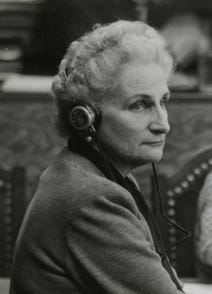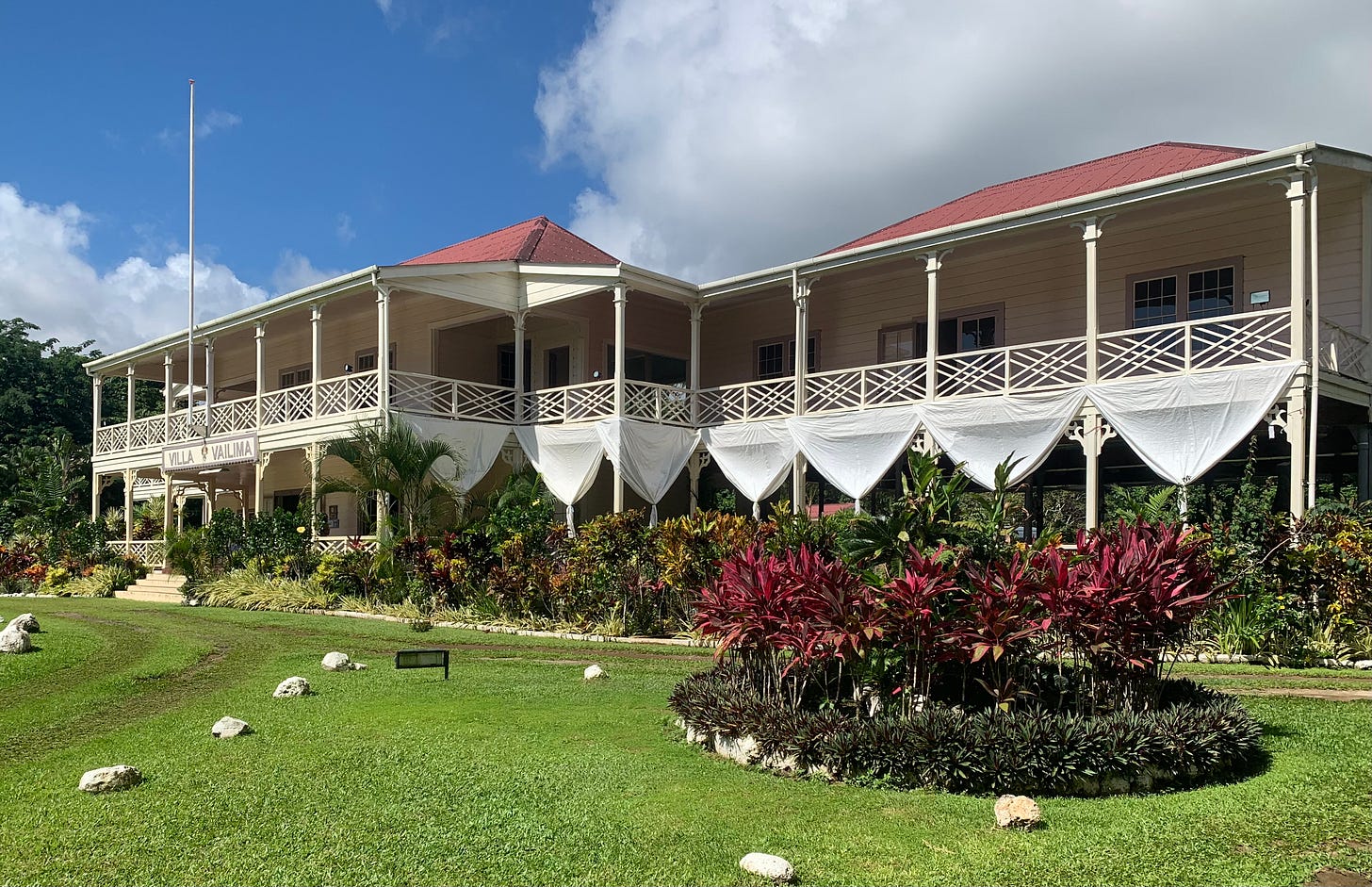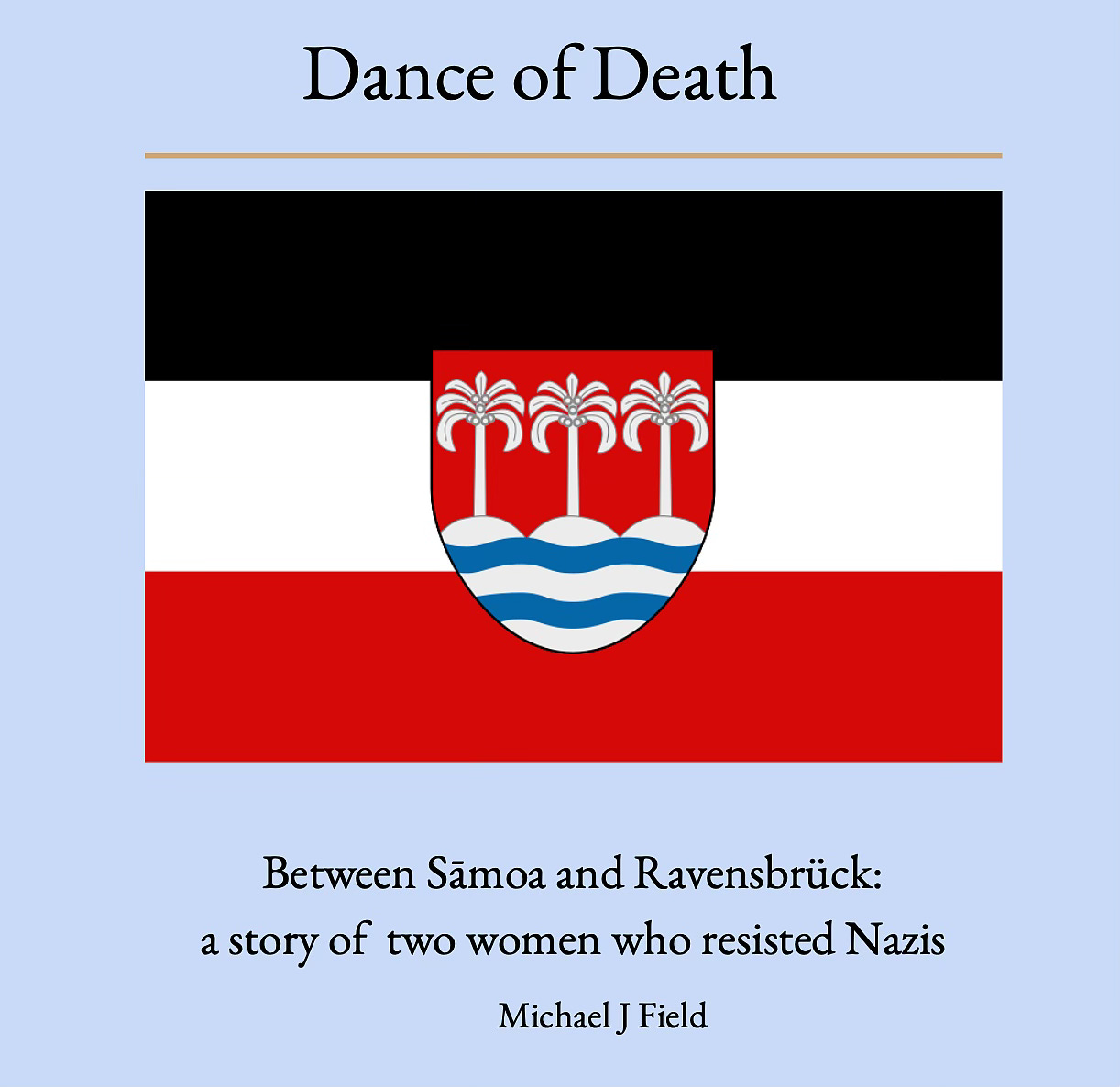‘I wonder,’ wrote journalist Fanny Stevenson of events in Sāmoa, ‘whether those who read the dispatches realise their full, terrible significance.’
She was writing of the 1899 United States and Royal Navy relentless and ruthless shelling of undefended Sāmoan villages. ‘... there should be no question among civilised people concerning the barbarity of those bombardments, whether the young, the old, the sick, the wounded, are involved in one common destruction.’
Her reportage, carried around the world, was written from the United States, but her thoughts were with a house in the hills behind Apia, Sāmoa, where she had lived. At one point, several American shells hit the house. Another set of experimental shells that exploded nearby were fired by the British: they proved so useful that they were improved and developed for use in the Western Front 14 years later.
Fanny’s home was Vailima, today a strange place of mostly inaccurate history served up to visitors - nearly all clueless foreigners seeking a noble story of a Scottish novelist saving heathen and now Christian savages. After death, a mythology re-created Robert Louis Stevenson. Sāmoans too have fallen for the marketing line that was first created by anxious English publishers, and kicked along by tourist entrepreneurs. The house, now entitled ‘Villa Vailima’, bears no relationship to the smaller affair that Fanny and RLS lived in. What tourists see was paid for by aid from Aotearoa New Zealand, rebuilt by Aotearoa’s Fletcher Building Ltd, and then, in a decision caught in a swell of political corruption, given to a trust dominated by rather rich (and now dead) American Mormons. The house is such a ridiculous parody that even Disney, at its worst, would have sent it back for a rewrite.
What today’s Vailima misses is the female side of its life: Fanny and, later, of mother-daughter Johanna and So'oa'emalelagi Solf. Their incredible stories are untold. Johanna gave birth to Lagi at Vailima in 1903. Later both women ran a secret ring in Berlin to smuggle Jews out of Germany, and both were seized by the Gestapo and were imprisoned in concentration camps. Their completely unique and heroic stories are untold at Vailima, or even known in Sāmoa.
And perhaps more significantly, Sāmoa remains without any real monument to those who struggled for its freedom; and yet Vailima was central to that entire story. Vailima should not celebrate the Strange Case of Dr Jekyll and Mr Hyde, but rather the struggle for freedom given by Mata’afa Iosefo, to Taisi Nelson, to the two Malietoa holders, to the people who were killed on Aso Pogisā.


Vailima’s now forgotten significance is that it was home to New Zealand administrators like Robert Logan, George Richardson and Stephen Allen who made their totalitarian decisions about Sāmoa. An account of two parties, Vailima and Tua’efu, tells of Richardson hosting a New Year’s Eve party for 200 officials at Valima. The Sāmoa Times reported that the affair was ‘brilliantly illuminated with electric globes of diversified colour.’ Dancing and feasting was so remarkable that ‘by unanimous opinion, the function was set down as being one of the most enjoyable ever held at Vailima’. Just over four kilometres west and separated by the 420-metre-high Mount Vaea, another bigger party was underway at Ta’isi’s mansion. It was a bigger gathering that was entertained with fireworks. They could be seen at Vailima.
Stevenson had no role in Sāmoa’s history, yet his life and times (1850-1894) have been countlessly and slavishly told, including his last four years of life in Sāmoa. He features, in passing, in my Invincible Strangers. Tourist propaganda these days holds that Sāmoans devotedly loved RLS so much that they gave him 127 hectares of land. That is risible. Stevenson and Fanny were wealthy people. Other than best selling books, RLS inherited much from his engineer father. Fanny was successful in her own right; they could afford a big block of land. The problem was that Sāmoans have never, freely, alienated land. RLS entered the scene as Germans, Americans and Britons were forcefully taking Sāmoan land, and provoking wars. Stevenson, involved in illicit arms trading, was a partisan part of Sāmoa’s intended destruction. The Vailima land was not given; it was taken. The mythology later claimed RLS was given a matai or chiefly title, ‘Tusitala’. In fact, it's just a job description. And there is the ‘Road of Loving Hearts’, said to be the hand carved track used to take his body to the top of the nearby mountain. By custom, Sāmoan’s bury their family close to home; not on a distant mountaintop.
Vailima is four kilometres south of Beach Road, a refreshing 175 metres above sea level.
Keep reading with a 7-day free trial
Subscribe to Michael Field's South Pacific Tides to keep reading this post and get 7 days of free access to the full post archives.






